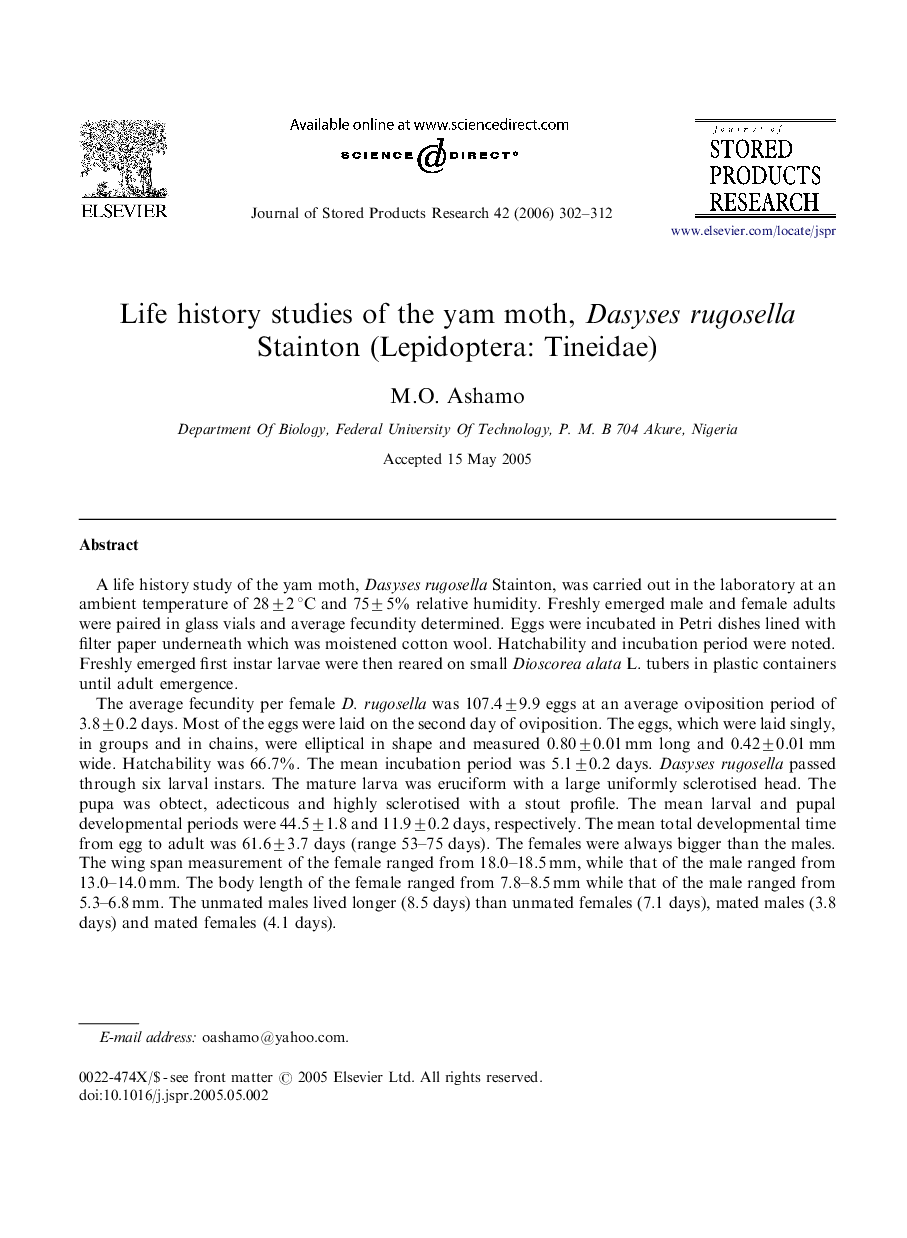| Article ID | Journal | Published Year | Pages | File Type |
|---|---|---|---|---|
| 4517605 | Journal of Stored Products Research | 2006 | 11 Pages |
A life history study of the yam moth, Dasyses rugosella Stainton, was carried out in the laboratory at an ambient temperature of 28±2 °C and 75±5% relative humidity. Freshly emerged male and female adults were paired in glass vials and average fecundity determined. Eggs were incubated in Petri dishes lined with filter paper underneath which was moistened cotton wool. Hatchability and incubation period were noted. Freshly emerged first instar larvae were then reared on small Dioscorea alata L. tubers in plastic containers until adult emergence.The average fecundity per female D. rugosella was 107.4±9.9 eggs at an average oviposition period of 3.8±0.2 days. Most of the eggs were laid on the second day of oviposition. The eggs, which were laid singly, in groups and in chains, were elliptical in shape and measured 0.80±0.01 mm long and 0.42±0.01 mm wide. Hatchability was 66.7%. The mean incubation period was 5.1±0.2 days. Dasyses rugosella passed through six larval instars. The mature larva was eruciform with a large uniformly sclerotised head. The pupa was obtect, adecticous and highly sclerotised with a stout profile. The mean larval and pupal developmental periods were 44.5±1.8 and 11.9±0.2 days, respectively. The mean total developmental time from egg to adult was 61.6±3.7 days (range 53–75 days). The females were always bigger than the males. The wing span measurement of the female ranged from 18.0–18.5 mm, while that of the male ranged from 13.0–14.0 mm. The body length of the female ranged from 7.8–8.5 mm while that of the male ranged from 5.3–6.8 mm. The unmated males lived longer (8.5 days) than unmated females (7.1 days), mated males (3.8 days) and mated females (4.1 days).The maximum daily mean progeny production was 25.7 on the 63rd day of pivotal age. The innate capacity for increased rc was 0.06 per female per day. The cohort generation time Tc was 63.0 days and the finite rate of increase hc was 1.06. The net reproductive rate Ro was 52.9.
